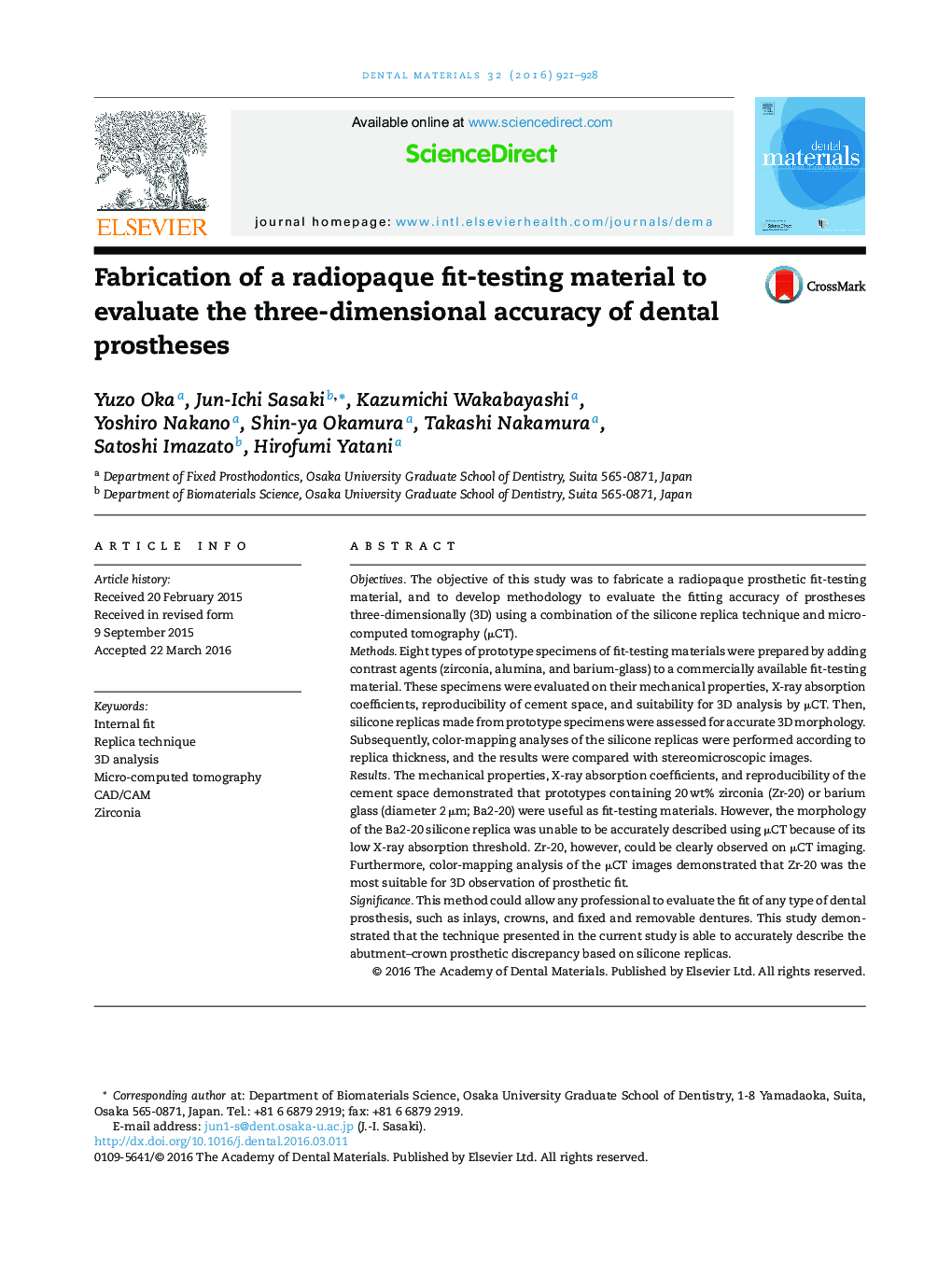| کد مقاله | کد نشریه | سال انتشار | مقاله انگلیسی | نسخه تمام متن |
|---|---|---|---|---|
| 1420408 | 986361 | 2016 | 8 صفحه PDF | دانلود رایگان |
• A novel radiopaque fit-testing material for μCT observation was developed.
• Prosthetic fit can be observed using a fit-testing material with 20 wt% zirconium.
• The material developed showed high consistency and radiopacity.
• Accuracy of developed method was assured by comparison with conventional methods.
• We established a novel fit-testing technique for dental prostheses.
ObjectivesThe objective of this study was to fabricate a radiopaque prosthetic fit-testing material, and to develop methodology to evaluate the fitting accuracy of prostheses three-dimensionally (3D) using a combination of the silicone replica technique and micro-computed tomography (μCT).MethodsEight types of prototype specimens of fit-testing materials were prepared by adding contrast agents (zirconia, alumina, and barium-glass) to a commercially available fit-testing material. These specimens were evaluated on their mechanical properties, X-ray absorption coefficients, reproducibility of cement space, and suitability for 3D analysis by μCT. Then, silicone replicas made from prototype specimens were assessed for accurate 3D morphology. Subsequently, color-mapping analyses of the silicone replicas were performed according to replica thickness, and the results were compared with stereomicroscopic images.ResultsThe mechanical properties, X-ray absorption coefficients, and reproducibility of the cement space demonstrated that prototypes containing 20 wt% zirconia (Zr-20) or barium glass (diameter 2 μm; Ba2-20) were useful as fit-testing materials. However, the morphology of the Ba2-20 silicone replica was unable to be accurately described using μCT because of its low X-ray absorption threshold. Zr-20, however, could be clearly observed on μCT imaging. Furthermore, color-mapping analysis of the μCT images demonstrated that Zr-20 was the most suitable for 3D observation of prosthetic fit.SignificanceThis method could allow any professional to evaluate the fit of any type of dental prosthesis, such as inlays, crowns, and fixed and removable dentures. This study demonstrated that the technique presented in the current study is able to accurately describe the abutment–crown prosthetic discrepancy based on silicone replicas.
Journal: Dental Materials - Volume 32, Issue 7, July 2016, Pages 921–928
